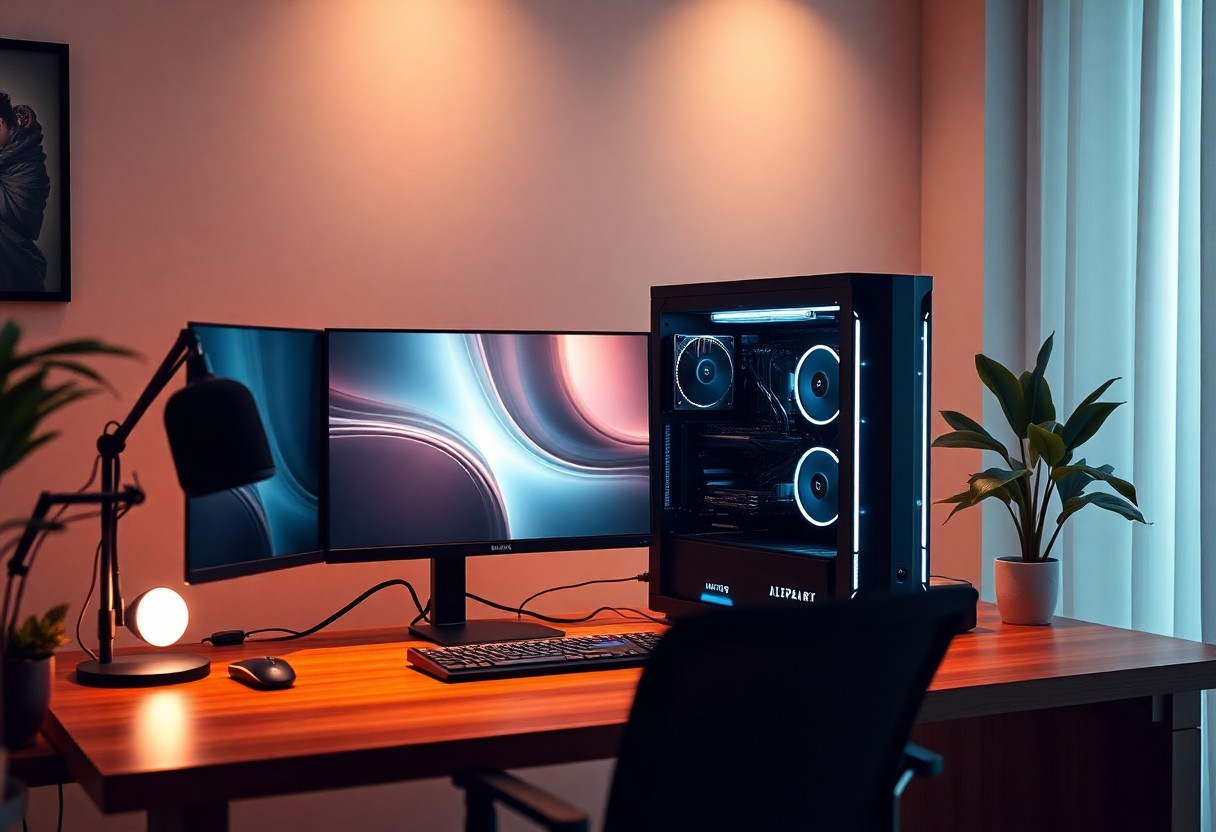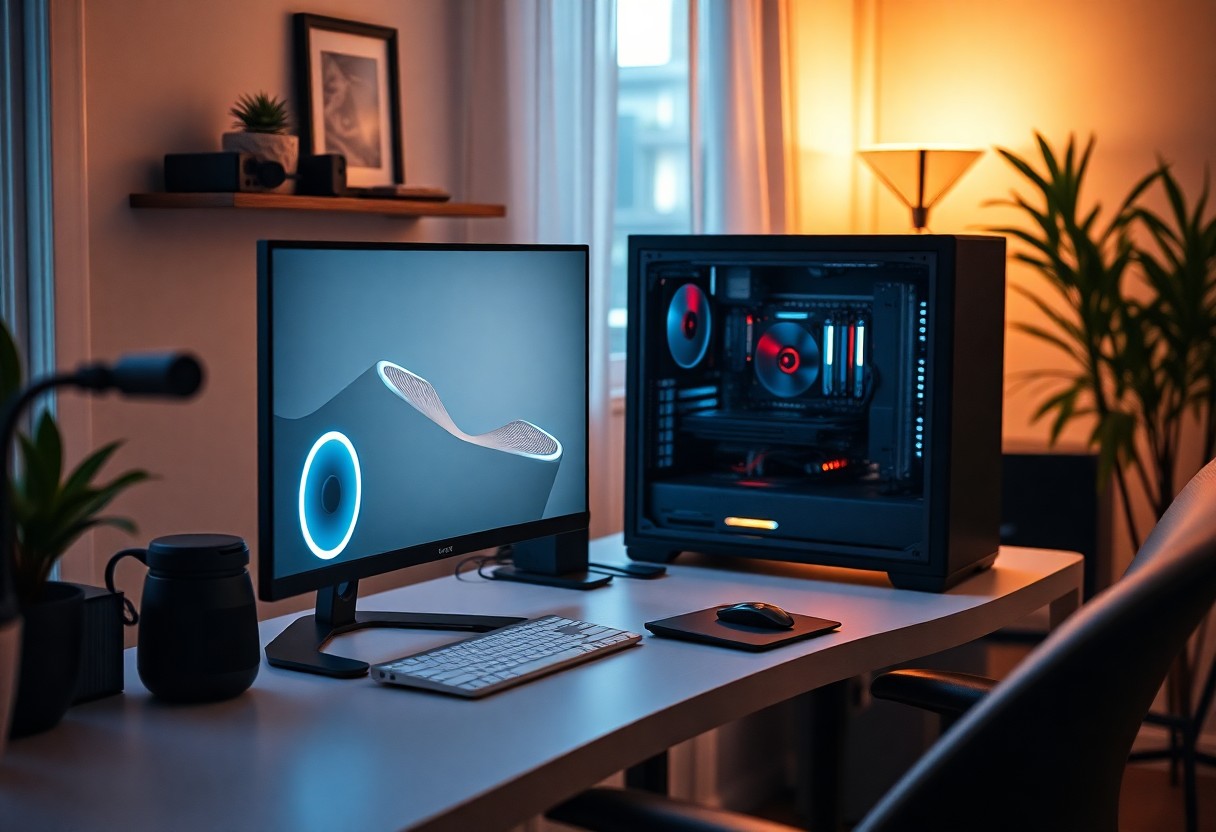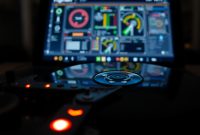PC enthusiasts often seek powerful performance without the accompanying noise that traditional setups produce. As you initiate on building your silent PC, understanding the balance between silent components and effective cooling is crucial. This guide provides crucial tips and strategies to create a whisper-quiet system that still delivers impressive performance, allowing you to enjoy gaming, productivity, or content creation without disruptive sounds. With the right choices, your custom build can provide a serene computing experience tailored to your needs.
Understanding Noise Sources
Before launching on your journey to build a silent PC, it’s imperative to understand the different sources of noise within your setup. Factors like components, airflow, and cooling solutions can contribute significantly to the overall sound levels. By identifying these noise sources early, you will be better equipped to select the right components and create an environment that prioritizes quiet operation while delivering outstanding performance.
Identifying Common Noise Generators
About noise in your PC, several components tend to generate the most sound. The power supply unit (PSU), fans, and hard drives often top the list, while graphics and CPUs can also contribute through their cooling systems. By pinpointing these common noise generators, you can take targeted action to mitigate their impact on your build.
Measuring Noise Levels
Levels of noise can vary greatly, making it important for you to understand how to measure them accurately. Utilizing a sound level meter, or even smartphone apps, can help you assess the decibel output of your components under various loads. This measurement enables you to compare different parts and make informed choices that align with your desire for a quieter setup.
But knowing just the levels isn’t enough; you should also consider how noise interacts with your environment. Background sounds, the acoustics of your room, and the positioning of your equipment can all influence perceived noise. Measuring under realistic conditions—when your computer is performing tasks similar to what you usually do—will provide more relevant insight into how quiet your setup will truly be.
Selecting the Right Components
You need to carefully choose components that minimize noise without sacrificing performance. Opting for high-quality hardware designed for low acoustic output ensures that your system runs quietly. Pay attention to specifications, as some components are inherently quieter than others, and look for user reviews that discuss noise levels. Striking the right balance between efficiency and silence will help you achieve a powerful yet serene setup.
Quiet CPUs and Coolers
With the right selection of CPUs and cooling solutions, you can maintain performance while keeping noise levels down. Look for CPUs that emphasize thermal efficiency, which often translates to lower fan speeds. Pair them with aftermarket coolers designed with noise reduction in mind, as many high-end models come equipped with silent fans or innovative heat dissipation technologies.
Sound-Dampening Cases
Among the most impactful components you can choose are sound-dampening cases. These cases often feature thick panels and sound-absorbing materials that significantly reduce operational noise. With a well-designed case, you can isolate internal sounds from components, allowing for a much quieter experience. Enhance your build’s acoustics by selecting a case specifically designed to minimize vibrations and external noise ingress.
And don’t overlook crucial features like rubber grommets and padded interiors in sound-dampening cases, which further reduce vibrations. Opt for cases that boast sealed designs or high-quality insulation to prevent sound leakage. Additionally, consider airflow options, as efficient cooling can promote quieter operation. Choosing the right case sets the foundation for achieving your desired silent yet powerful PC build.

Cooling Solutions for Silence
The key to a quiet PC is selecting the right cooling solution. Efficient cooling not only keeps your components operating at optimal temperatures but also minimizes noise levels. By choosing the right fans, heatsinks, or liquid cooling systems, you can enjoy a powerful setup without the distracting hum of aggressive cooling solutions.
Air Cooling vs. Liquid Cooling
For most users, air cooling provides an effective balance of performance and noise levels. High-quality air coolers can handle substantial heat loads while maintaining quiet operation. Liquid cooling, on the other hand, can offer superior heat dissipation, especially in overclocked systems, but may introduce more noise from pumps and fans if not chosen carefully.
Fan Selection and Placement
On your journey to a silent PC, fan selection and placement play pivotal roles in your build’s acoustic performance. Opt for high-quality, low-noise fans with good airflow capabilities. Position them strategically to create an efficient airflow path, thus ensuring that components stay cool while minimizing turbulence and noise.
Plus, when selecting fans, look for those designed specifically for low noise operation, such as PWM fans that can adjust their speed based on temperature. Proper placement of intake and exhaust fans can further enhance cooling efficiency and maintain a quiet environment. Ensure that your fans are mounted securely and consider using rubber grommets to reduce vibration noise. A well-planned fan setup can significantly reduce the overall noise while keeping your system effectively cooled.
Power Supply Considerations
Despite being often overlooked, the power supply unit (PSU) plays a vital role in the noise levels of your silent PC. Choosing a high-quality, efficient PSU can significantly reduce acoustic output while ensuring stable power delivery to your components. Look for units that emphasize low operating noise, high efficiency ratings, and quality construction, as these factors will contribute to a quieter system overall.
Choosing a Quiet Power Supply
One of the most important aspects of building a silent PC is selecting a power supply that minimizes noise. Look for models that feature advanced technologies such as hybrid fan modes, which allow the fan to remain off at lower loads, or units with larger, slower-spinning fans designed for quieter operation. Additionally, check reviews and noise ratings to find the best option for your build.
Modular vs. Non-Modular Options
At the heart of your power supply decision is whether to choose modular or non-modular options. Modular power supplies offer the convenience of plugging in only the cables you need, reducing clutter and improving airflow within your case. Conversely, non-modular options come with all cables attached, which can lead to more cable management challenges and less optimal airflow.
In addition to convenience, modular power supplies generally allow for better airflow and cooler temperatures within your case, which can indirectly contribute to a quieter build. By eliminating excess cables, you’ll not only improve aesthetics but also enhance cooling efficiency, reducing the need for fans to ramp up during operation. While non-modular supplies can be more cost-effective, the benefits of modular designs often outweigh the initial savings, making them worth considering for your silent PC project.
Soundproofing Techniques
For a truly silent PC build, incorporating soundproofing techniques is vital. You can enhance your setup by using sound-dampening materials that minimize noise from internal components. Consider isolating the case and utilizing vibration-reduction mounts to decrease the sound generated during operation. You can also explore adding mass-loaded vinyl or acoustic mats within your PC case to absorb sound waves and further reduce noise levels, creating a peaceful computing environment.
Acoustic Panels and Foam
With the use of acoustic panels and foam, you can effectively dampen the noise emanating from your PC. These materials can be strategically placed around your workspace to absorb sound and improve the overall acoustics of your area. By minimizing sound reflections, you create a quieter environment, making your computing experience more enjoyable.
Cable Management for Reduced Noise
Beside soundproofing, proper cable management plays a significant role in minimizing noise. Tidy cables can prevent vibrations and interference from affecting your components, contributing to a quieter system.
It is important to organize your cables within the PC case and around your workspace. Secure loose cables with ties or sleeves to limit movement and contact with fans, which can generate noise. By ensuring that your cables are neatly routed and secured, you not only improve aesthetics but also help reduce noise levels, creating a more serene computing experience.
Maintaining a Quiet PC
To keep your silent PC operating at optimal levels, regular maintenance is key. This involves ensuring that dust does not accumulate in fans and components, as buildup can lead to increased noise and reduced performance. Additionally, you should periodically check for loose screws, which can cause rattling sounds, and monitor the health of your hardware to prevent unexpected failures that could disrupt your quiet environment.
Regular Maintenance Tips
With simple regular maintenance, you can enhance your PC’s silence significantly. Follow these tips to maintain the tranquility of your setup:
- Clean fans and air filters monthly.
- Check for dust buildup inside the case.
- Ensure all components are tightly secured.
- Monitor temperatures to prevent overheating.
Perceiving noise as an indicator of potential issues will help you maintain a serene computing experience.
Upgrading Components for Enhanced Silence
For those looking to go a step further, upgrading your components can dramatically reduce noise levels while improving performance. Opt for quieter cooling solutions, such as high-quality fans or all-in-one liquid cooling units. Additionally, consider using solid-state drives (SSDs) instead of traditional hard drives, as they operate silently. By focusing on quality components designed for minimal noise, you can create a peaceful and efficient workspace.
This approach not only minimizes sound but also contributes to better thermal performance, allowing your system to run more efficiently. When you choose components that are engineered for silence—such as low-noise power supplies and sound-dampening cases—you create a harmonious balance between power and performance. Investing in these upgrades means that you can enjoy a whisper-quiet environment without sacrificing the capabilities of your PC.
To wrap up
Considering all points, building a silent PC involves careful selection of components that prioritize noise reduction without compromising performance. You should focus on choosing efficient cooling solutions, sound-dampening cases, and components designed for quiet operation. Additionally, take the time to arrange your setup for optimal airflow while employing vibration-dampening materials. By following these tips, you can create a powerful workstation that enhances your productivity while keeping your environment calm and serene.



